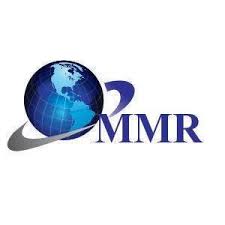The world of work is constantly changing, and remote employment has become an increasingly popular and essential way to operate. As organizations adapt to the flexibility of remote work, the need for effective tools for work from home management becomes crucial.
In this guide, we’ll explore some of the best software and tools available to help you maximize productivity and build a thriving work-from-home team.
The Rise of Remote Work and the Need for Remote Employee Management Software
The transition to remote work has brought about a paradigm shift in how businesses operate. With teams scattered across various locations, the traditional methods of employee management need to adapt to the new normal. Remote employee management software becomes the linchpin in ensuring seamless collaboration, communication, and productivity in a distributed workforce.
Key Features to Look for in Remote Employee Management Software
1. Time and Attendance Tracking:
Effective time and attendance tracking tools help organizations ensure that remote employees are logging their work hours accurately. This feature is crucial for payroll processing and maintaining transparency.
2. Project and Task Management:
Robust project and task management tools are essential for organizing and prioritizing work in remote settings. They enable teams to collaborate efficiently, assign tasks, and track project progress in real time.
3. Communication and Collaboration Tools:
Effective communication is the backbone of remote work. Remote employee management software should include features like messaging platforms, video conferencing, and file-sharing capabilities to foster seamless collaboration among team members.
4. Performance Management and Feedback Mechanisms:
Performance management tools help in setting clear goals and expectations for remote employees. Regular feedback mechanisms ensure continuous improvement and keep employees engaged in their roles.
5. Employee Engagement and Wellness Features:
Tools that promote employee engagement and well-being are crucial for remote teams. Features such as virtual team-building activities, wellness programs, and employee recognition contribute to a positive remote work culture.
6. Security Measures:
Given the sensitive nature of remote work, security features like data encryption, secure login credentials, and access controls are imperative to safeguarding confidential information.
Benefits of Remote Employee Management Software
1. Enhanced Productivity:
Remote employee management software streamlines workflows and eliminates bottlenecks, leading to increased productivity. It provides a centralized platform for task management and collaboration, reducing time spent on administrative tasks.
2. Improved Communication:
Effective communication tools bridge the gap between remote team members. Video conferencing, instant messaging, and collaborative document editing ensure that communication flows seamlessly across distributed teams.
3. Real-time Monitoring and Reporting:
Managers can access real-time data and reports on employee activities, project progress, and task completion. This visibility enhances decision-making and enables proactive management.
4. Employee Accountability:
Remote employee management software promotes accountability by tracking work hours, task completion, and project milestones. This transparency ensures that everyone is contributing to the team’s goals.
5. Employee Well-Being:
Features that focus on employee well-being, such as virtual team-building activities and wellness programs, contribute to a positive work environment. This, in turn, boosts morale and job satisfaction.
Top Remote Employee Management Software and Tools for Work from Home
1. ProHance:
ProHance isn’t just about managing your work-from-home team, it’s about empowering them to reach their full potential. This best remote team management software is the key to unlocking a new level of efficiency and success for your work-from-home team.
2. Asana:
Asana is a robust project management tool that helps remote teams organize and manage tasks efficiently. It offers features such as task assignment, project timelines, and collaboration spaces.
3. Slack:
Slack is a widely used messaging platform that facilitates real-time communication among remote teams. It offers channels for different projects, direct messaging, and integration with other collaboration tools.
4. Trello:
Trello is a user-friendly project management tool that uses boards, lists, and cards to organize tasks and projects. It’s a visual tool that aids remote teams in staying organized and focused.
5. Zoom:
Zoom is a popular video conferencing tool that enables virtual meetings, webinars, and screen sharing. It’s essential for remote teams to connect face-to-face and collaborate in real time.
Choosing the Right Remote Employee Management Software
1. Scalability:
The software should be scalable to accommodate the growth of remote teams. It should be able to adapt to the changing needs of the organization.
2. User-Friendly Interface:
A user-friendly interface is crucial for widespread adoption. Remote employee management software should be easy for both employees and managers to navigate.
3. Integration Capabilities:
The software should seamlessly integrate with other tools used by the organization, such as email, calendar applications, and file-sharing platforms.
4. Customization Options:
A one-size-fits-all approach may not suit every organization’s unique processes. The software should allow customization to align with specific workflows.
5. Security Measures:
Security is paramount, especially when dealing with remote work. The software should employ robust security measures to protect sensitive information.
Conclusion
In the era of remote work, choosing the best tools for remote employee management is a strategic imperative for organizations aiming to optimize their workforce. By leveraging the right software solutions, businesses can empower their teams, foster collaboration, and propel productivity to new heights. As the digital landscape continues to evolve, the effective implementation of remote employee management software becomes not just a choice but a necessity for navigating the complexities of the modern business world.


